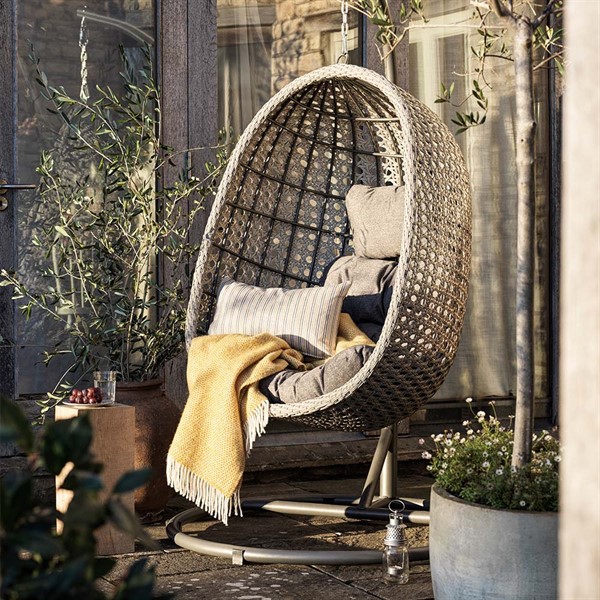Integration of Indoor and Outdoor Spaces
Hanging egg chairs play a significant role in modern architecture by facilitating the integration of indoor and outdoor spaces. With their versatile design and ability to be placed both indoors and outdoors, these chairs blur the boundaries between the built environment and nature.
Modern architecture often prioritizes open floor plans and large windows that connect interior spaces with the surrounding landscape. Hanging egg chairs enhance this connection by providing a comfortable seating option that can be placed on a balcony, patio, or in a sunroom, allowing occupants to enjoy the outdoors while still being protected and sheltered.
By incorporating hanging egg chairs into modern architectural designs, architects can create a seamless flow between indoor and outdoor spaces, providing inhabitants with a greater sense of freedom and connection to the natural environment.
Statement Pieces and Focal Points
Hanging egg chairs serve as statement pieces and focal points within modern architectural designs. Their unique and eye-catching designs draw attention and add a sense of visual interest to a space, becoming a conversation starter and a defining element of the overall design.
Whether placed in a minimalist living room, a sleek office space, or a contemporary garden, hanging egg chairs command attention and become a focal point around which other design elements can be arranged. Their sculptural forms, vibrant colors, or innovative materials create a striking contrast against the surrounding architectural elements, adding depth and character to the space.
Architects often strategically position hanging egg chairs in areas where they can create a visual impact, such as near windows, in open-plan living areas, or in outdoor gathering spaces. By doing so, they elevate the overall architectural composition and create a memorable and engaging experience for the occupants.
Flexibility and Adaptability
Hanging egg chairs offer flexibility and adaptability in modern architecture, accommodating changing needs and lifestyles. Their lightweight and portable nature allow them to be easily moved and repositioned to suit different activities and spatial configurations.
In open-plan living spaces, hanging egg chairs can act as versatile seating options that can be used for relaxation, reading, or socializing. They provide an alternative to traditional seating arrangements and allow for more dynamic and adaptable use of space.
Moreover, the ability to place hanging egg chairs both indoors and outdoors enhances their flexibility. They can be utilized as outdoor seating during pleasant weather and brought indoors during inclement weather or colder seasons, providing continuity in the user experience regardless of the outdoor conditions.
Architects can consider incorporating hanging egg chairs into their designs to provide inhabitants with flexible seating options that can be easily adjusted to meet their changing needs and preferences, promoting a more versatile and adaptable living environment.
Enhanced Aesthetics and Design Harmony
Hanging egg chairs contribute to the overall aesthetics and design harmony in modern architecture. Their contemporary designs and unique shapes often align with the clean lines and minimalistic principles of modern architectural styles.
These chairs can add an element of playfulness and visual intrigue to a space, breaking the monotony and adding a touch of creativity. They can create a sense of balance and harmony when paired with other modern furniture pieces, accentuating the overall design concept.
Architects can use hanging egg chairs strategically to create a sense of contrast or harmony with other architectural elements. For instance, placing a hanging egg chair in a corner with floor-to-ceiling windows can create an interesting juxtaposition between the organic shape of the chair and the geometric lines of the surrounding architecture.
By carefully selecting hanging egg chairs that complement the overall design language and aesthetic of a space, architects can enhance the visual appeal and cohesiveness of modern architectural designs.
